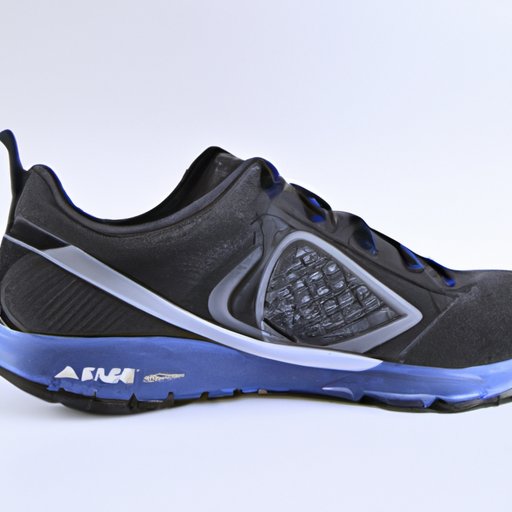Introduction
Running shoes are specialized footwear designed to provide cushioning, support, and stability while running. Investing in quality running shoes is essential for any runner, as they can help prevent injuries and improve performance. But how many miles can you expect to get out of a pair of running shoes?
A Guide to Choosing the Right Running Shoes for Your Distance
When it comes to choosing the right running shoes for your distance, there are a few key factors to consider. Different types of running shoes are designed for different distances and terrains, so it’s important to select the right shoe for the job. For example, if you’re running long distances on pavement or trails, you’ll need a different type of shoe than if you’re doing sprints on a track.
The type of running you do will also have an impact on the type of shoe you should wear. For example, runners who do a lot of speed work may opt for a lightweight racing flat, while those who run longer distances may prefer a cushioned, supportive shoe. It’s also important to consider your foot type and arch height when selecting running shoes, as this can affect the level of support and cushioning you need.

Comparing Different Types of Running Shoes for Optimal Mileage
There are several different types of running shoes available, each with its own set of features and benefits. Road-running shoes are designed for running on paved surfaces and are typically lightweight, flexible, and cushioned. Trail-running shoes are more rugged and durable, with thicker soles and extra grip for running on uneven terrain. Track spikes are designed for short-distance races and feature lightweight materials and minimal cushioning.
For optimal mileage, it’s important to compare the features of different types of running shoes. Cushioning is an important factor to consider, as it helps absorb shock and protect your feet and joints from injury. Stability is also important for runners who overpronate or have other gait issues, as it helps reduce the risk of injury. Weight is another factor to consider, as lighter shoes can help you run faster and more efficiently.
How Many Miles Can You Expect to Get Out of a Pair of Running Shoes?
The lifespan of running shoes varies depending on several factors, including the type of shoe, how often you run, and how well you care for them. Generally speaking, most running shoes will last between 300 and 500 miles, although some higher-end shoes may last even longer. It’s also important to keep in mind that the life of your running shoes can be extended by taking proper care of them.
It’s important to rotate between two or three pairs of running shoes, as this can help maximize their lifespan. Additionally, it’s important to clean your running shoes regularly and store them in a cool, dry place when not in use. Finally, it’s important to replace your running shoes when they start to show signs of wear and tear, such as worn-down soles or frayed laces.
The Benefits of Investing in Quality Running Shoes for Long-Distance Runs
Investing in quality running shoes can have a number of benefits for long-distance runners. Quality running shoes are designed to provide superior cushioning, support, and stability, which can help reduce the risk of injury and improve performance. Additionally, quality running shoes tend to be more durable and last longer than cheaper alternatives, making them a more cost-effective option in the long run.
When purchasing running shoes, it’s important to avoid common mistakes such as buying shoes based solely on looks or buying shoes that are too small or too big. Additionally, it’s important to try on several different pairs of shoes before selecting the right one, as this will help ensure a proper fit and allow you to test out the cushioning and support. Finally, it’s important to purchase shoes from a reputable retailer, as this will help ensure you’re getting quality shoes.

What to Look for When Buying Running Shoes for Maximum Mileage
When looking for running shoes for maximum mileage, it’s important to look for certain features. Cushioning and support are two of the most important features to look for, as these will help reduce the risk of injury and improve performance. Additionally, it’s important to look for shoes with a breathable upper and a grippy sole, as this will help keep your feet comfortable and stable while running.
Popular brands and models of running shoes include Nike’s Zoom Pegasus Turbo 2, Adidas’s Ultra Boost, and Brooks’s Adrenaline GTS. It’s also important to consider your budget when selecting running shoes, as high-end shoes can be quite expensive. However, investing in quality running shoes can be a wise decision in the long run, as they will last longer and provide superior cushioning and support.
Conclusion
Investing in quality running shoes is essential for any runner, as they can provide cushioning, support, and stability while running. The lifespan of running shoes varies depending on several factors, including the type of shoe, how often you run, and how well you care for them. Generally speaking, most running shoes will last between 300 and 500 miles. When selecting running shoes, it’s important to consider your foot type and arch height, as well as the type of running you do. Additionally, it’s important to look for shoes with cushioning, support, and a breathable upper. Popular brands and models of running shoes include Nike’s Zoom Pegasus Turbo 2, Adidas’s Ultra Boost, and Brooks’s Adrenaline GTS.
Investing in quality running shoes can have a number of benefits for long-distance runners, including reducing the risk of injury and improving performance. Taking care of your running shoes and rotating between two or three pairs can also help maximize their lifespan. With the right pair of running shoes, you can enjoy maximum mileage and improved performance.


